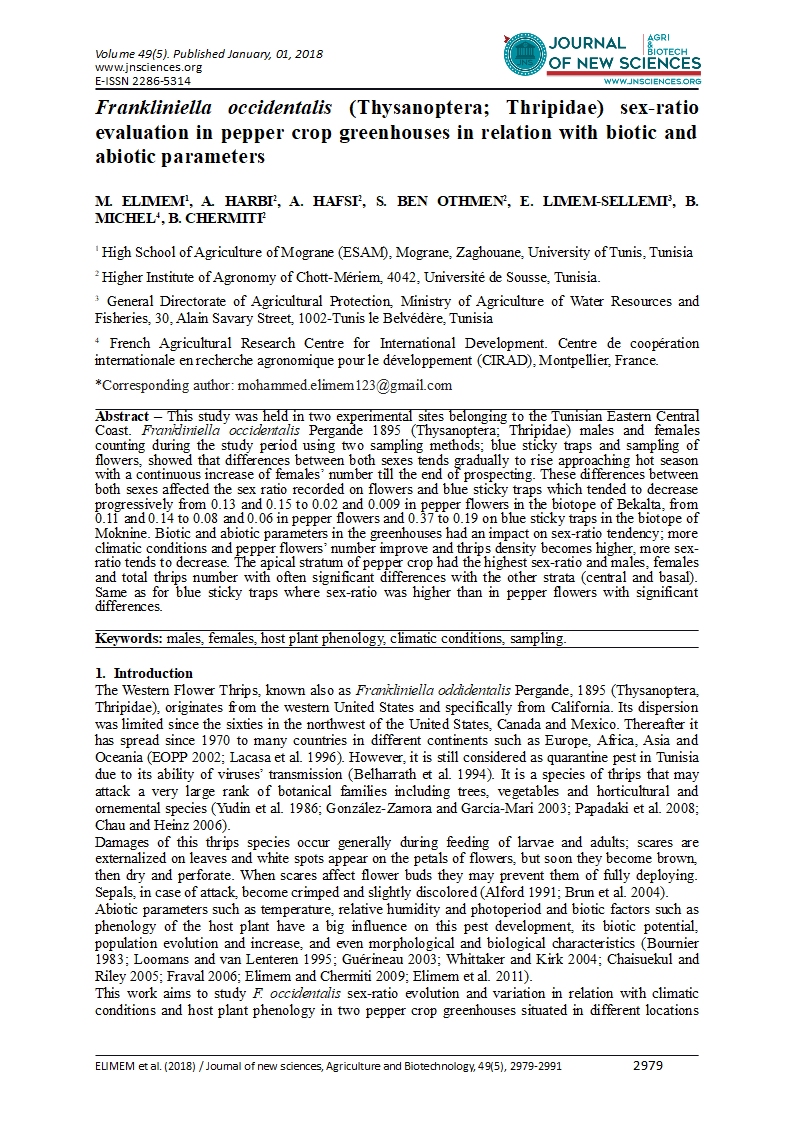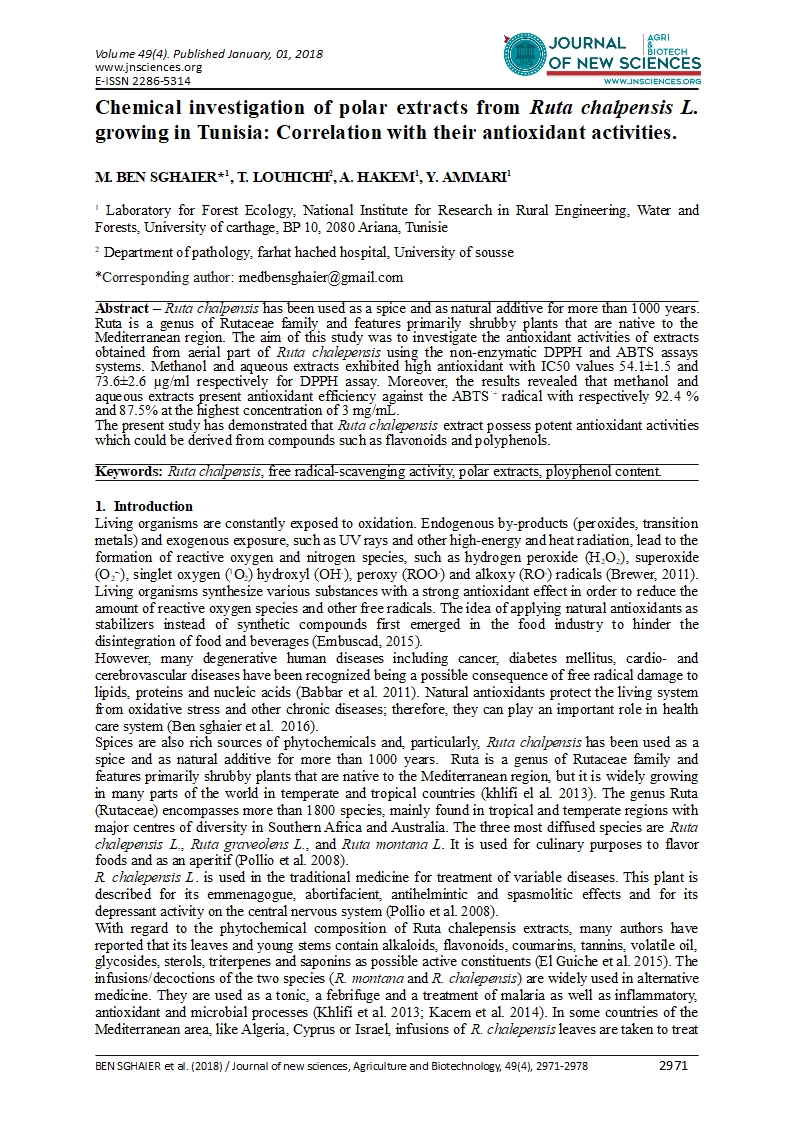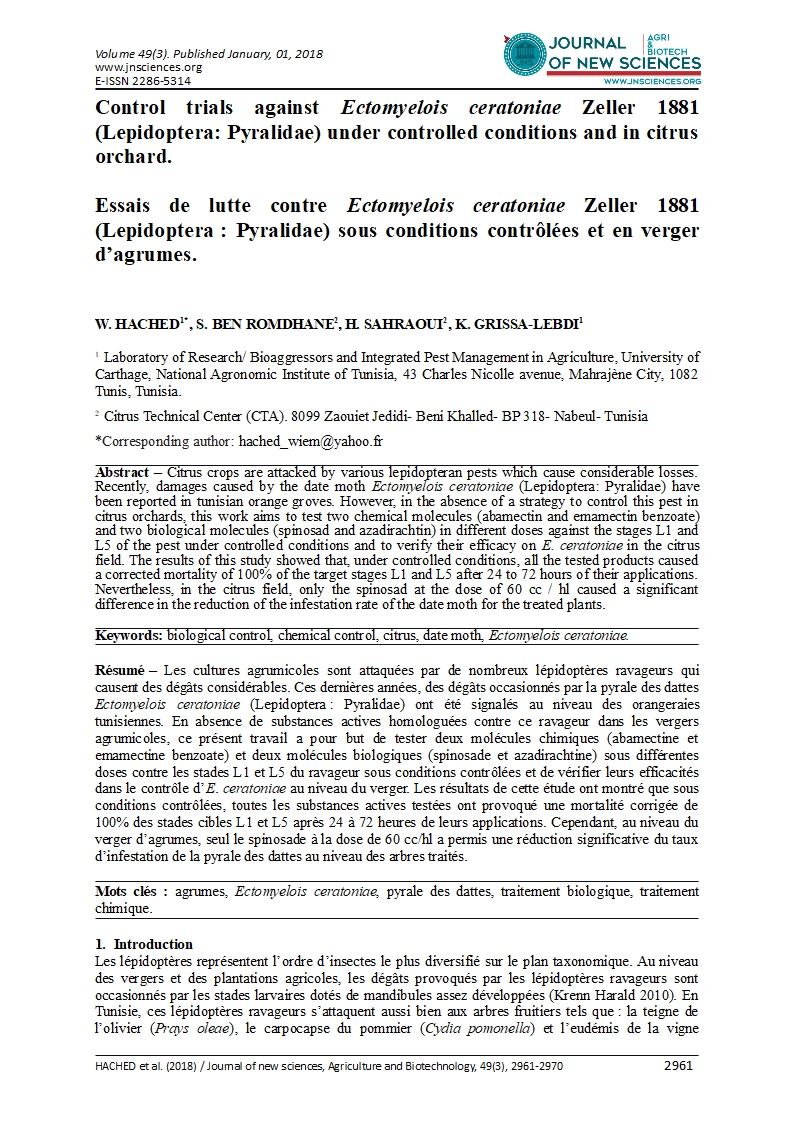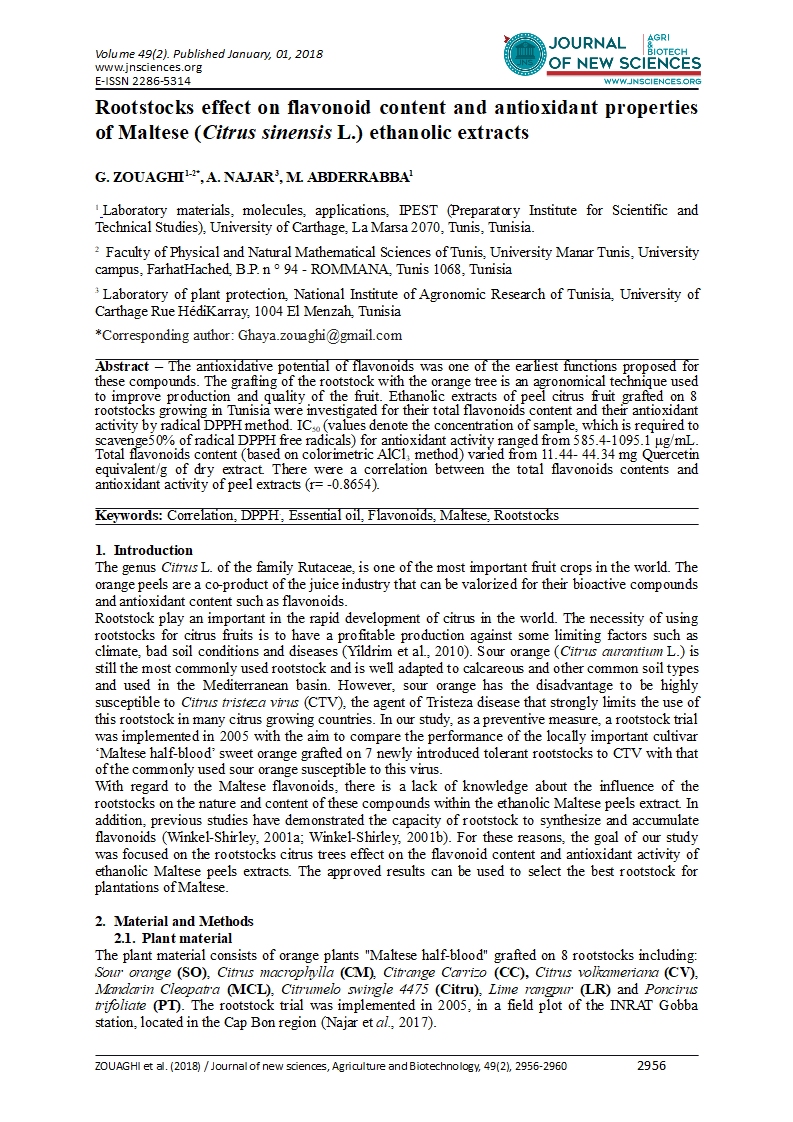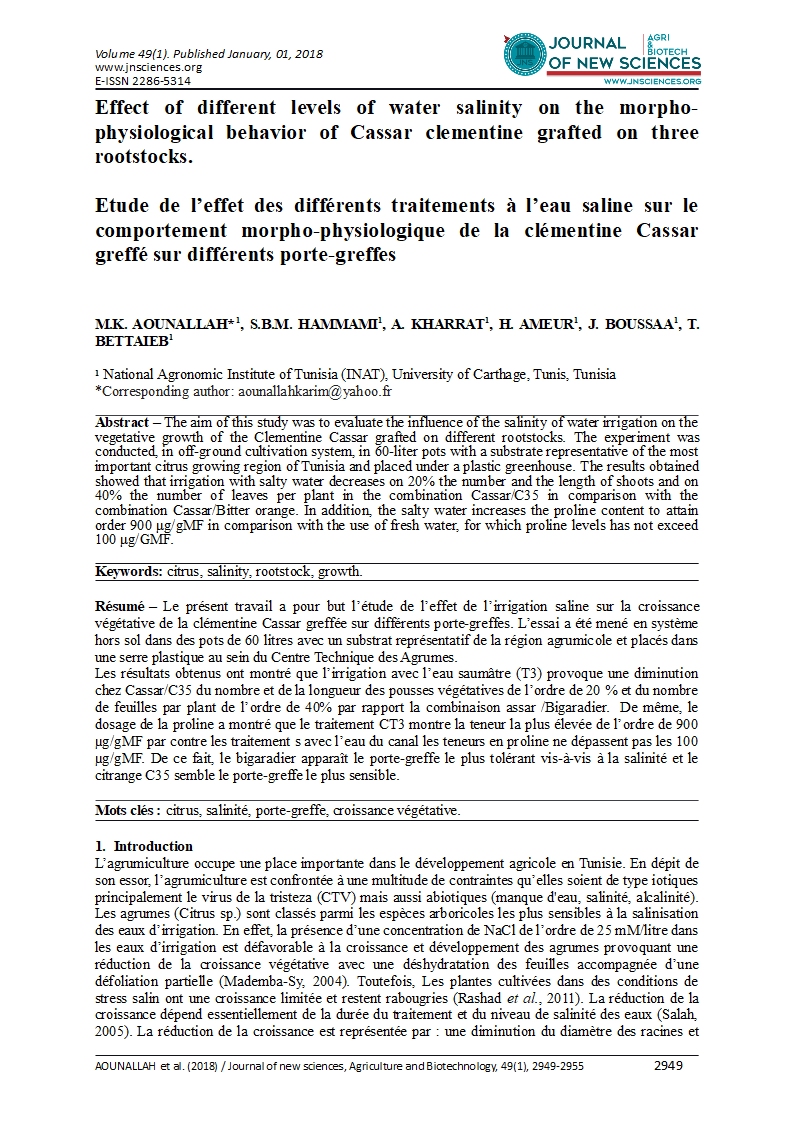- Category: Volume 49
- Hits: 5184
Dynamic populations of the cereal Cecidomyidae: Mayetiola destructor Say (1817) and Mayetiola hordei Kieffer (1909) (Diptera; Cecidomyiidae) on barley in the region of Mograne in Zaghouan
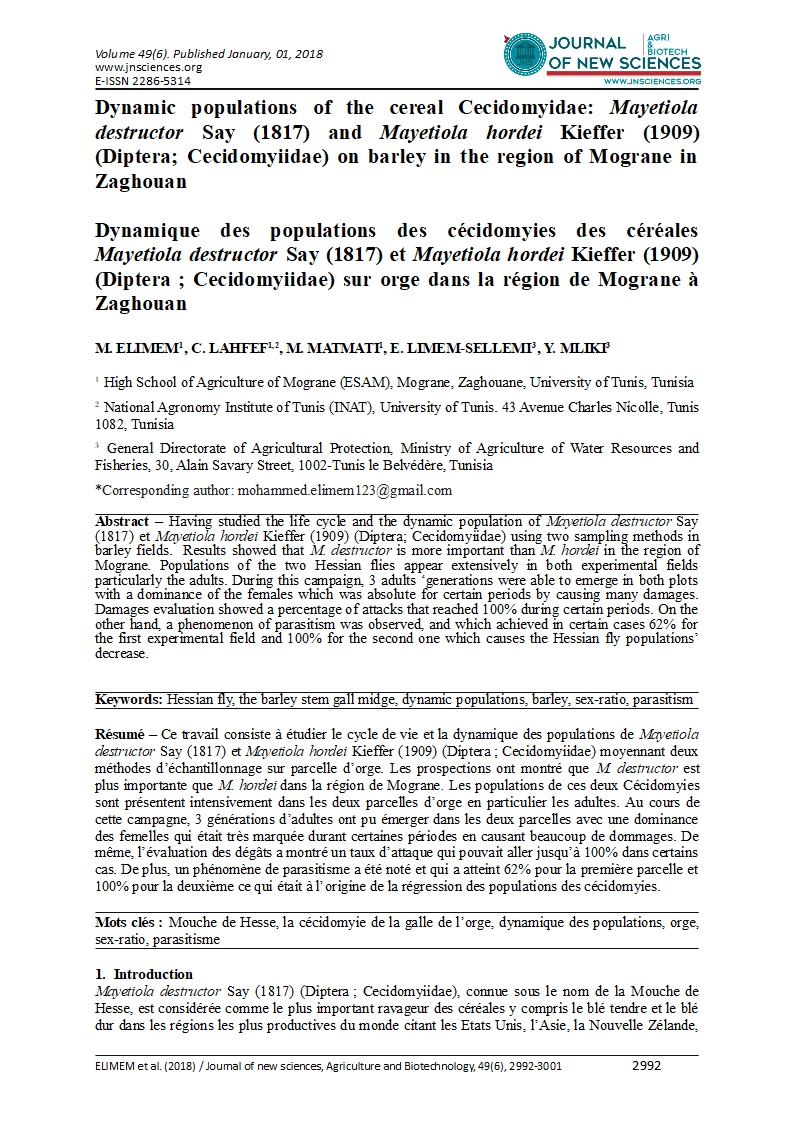
Dynamique des populations des cécidomyies des céréales Mayetiola destructor Say (1817) et Mayetiola hordei Kieffer (1909) (Diptera ; Cecidomyiidae) sur orge dans la région de Mograne à Zaghouan
M. ELIMEM1
C. LAHFEF1,2
M. MATMATI1
E. LIMEM-SELLEMI3
Y. MLIKI3
1 High School of Agriculture of Mograne (ESAM), Mograne, Zaghouane, University of Tunis, Tunisia
2 National Agronomy Institute of Tunis (INAT), University of Tunis. 43 Avenue Charles Nicolle, Tunis 1082, Tunisia
3 General Directorate of Agricultural Protection, Ministry of Agriculture of Water Resources and Fisheries, 30, Alain Savary Street, 1002-Tunis le Belvédère, Tunisia
Abstract – Having studied the life cycle and the dynamic population of Mayetiola destructor Say (1817) et Mayetiola hordei Kieffer (1909) (Diptera; Cecidomyiidae) using two sampling methods in barley fields. Results showed that M. destructor is more important than M. hordei in the region of Mograne. Populations of the two Hessian flies appear extensively in both experimental fields particularly the adults. During this campaign, 3 adults ‘generations were able to emerge in both plots with a dominance of the females which was absolute for certain periods by causing many damages. Damages evaluation showed a percentage of attacks that reached 100% during certain periods. On the other hand, a phenomenon of parasitism was observed, and which achieved in certain cases 62% for the first experimental field and 100% for the second one which causes the Hessian fly populations’ decrease.
Keywords: Hessian fly, the barley stem gall midge, dynamic populations, barley, sex-ratio, parasitism

